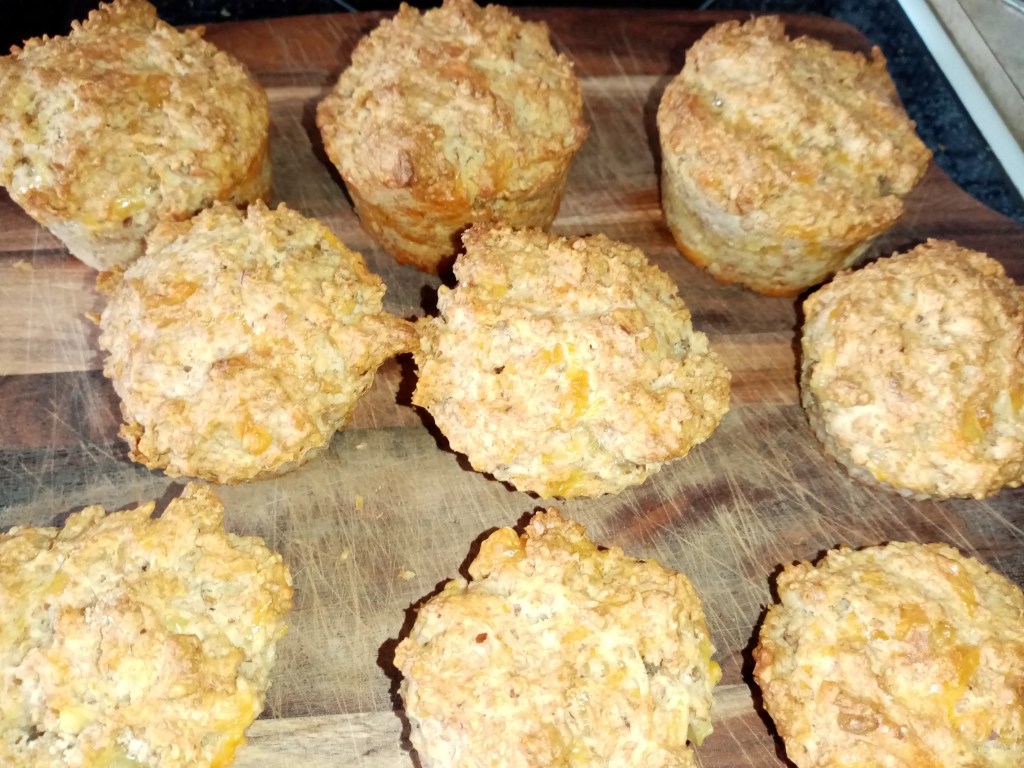
Musings on baking bread
I’ve written previously about ‘Everything you wanted to know about baking bread‘ and it occurred to me today that it’s a little more process driven than ingredient focused. My journey making bread began with making all our bread by hand which I found restrictive and time consuming. I later moved, very happily so, to a Panasonic Bread Maker. That allowed me a little more time to experiment with ingredients and research.
I gave serious contemplation to buying a sourdough starter (sourdough is much easier to digest than commercial bread) but my daughter doesn’t like the tangy taste. I researched ways to make the bread I was feeding my daughter more nutritious. I also made myself more aware of the chemistry involved and how different ingredients impact hydration ratios and rising.
Supermarket bread is essentially refined white flour (so basic starch) with a token amount of other ingredients potentially added; Julian Lee wrote an excellent article in 2018 revealing commercial bread-making processes in New Zealand. At home, you can start with high grade (or strong) white flour but add extra nutrition into the mix.
Whole Wheat
If you can afford to buy stone-ground whole wheat flour then you can make some pretty fine bread. If you’re shopping at the supermarket then it’s sufficient to be aware that the wheat kernel is made up of bran (fiber), the germ (protein and nutrition), and the endosperm (a starchy tissue). You can probably guess which part white flour is made from!
At the supermarket you can buy strong white flour and also buy bags of wheat bran and wheat germ. Not only do these have different nutritional profiles but these also have different impacts on the properties of your bread. Wheat bran has a drying quality and may require additional hydration. Wheat germ will naturally make your bread moister and fluffier.
Keep in mind that you don’t need to make a loaf entirely of white flour. When baking, I usually have 70-80% of my ‘flour’ made up of white flour and then use a range of dry ingredients to make up the weight. This equates to 350-400g of white flour and 50-100g of other flours and seeds.
Wholemeal Spelt Flour
Wholemeal spelt flour has a high nutritional profile and is easier to digest. It also has less gluten so will produce a denser loaf and may require guar gum to help it bind.
Wholegrain Kamut Flour
Like spelt, kamut flour is lower in gluten and easier to digest. It’s a brand name for khorasan wheat and is an older variety of wheat. There have been small studies performed which suggest that kamut flour has health benefits (over standard flour) and may help to reduce certain inflammation markers. It’s important to remember that one of it’s other benefits is that it is an organic wholegrain flour (as opposed to highly refined bleached white flour).
Ground Linseed – Sunflower – Almond (LSA)
Whole seeds can make a loaf dense and the texture doesn’t appeal to everyone. It’s not necessary to pour heaps of whole seeds into your bread dough. You can add plenty of protein, fiber, and omega-3 fatty acids just by adding 2 Tablespoons of ground seeds to your bread dough.
Popular powerhouses of nutrition include linseed (flaxseed), sunflower seeds, almonds, and chia seeds. Quinoa is another but I found even small amounts of quinoa flour to have a noticeable taste in the bread.
You might like to rotate different seeds in order to vary your nutritional profile. The cheapest and easiest option is to alternate between ground LSA and ground chia seeds.
Gluten Free Grains
One of my favourite ways of making multi-grain bread is to use Red Mill Gluten Free Mighty Tasty Hot Cereal. If you’re picturing a cereal box with some puzzlement, it’s actually a mix of freshly milled whole grain brown rice, corn, buckwheat and sorghum. It’s a handy way of adding a broader nutritional profile to the loaf and is so finely milled that it doesn’t overwhelm the loaf. It’s weight-dense so you only need a small amount; it still produces a fluffy loaf and is incorporated into the texture without being obtrusive.






